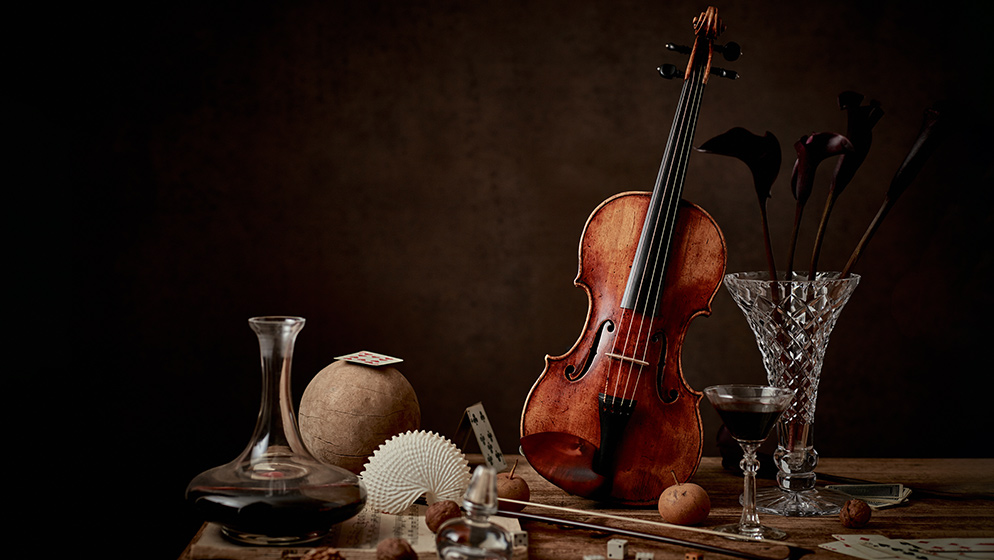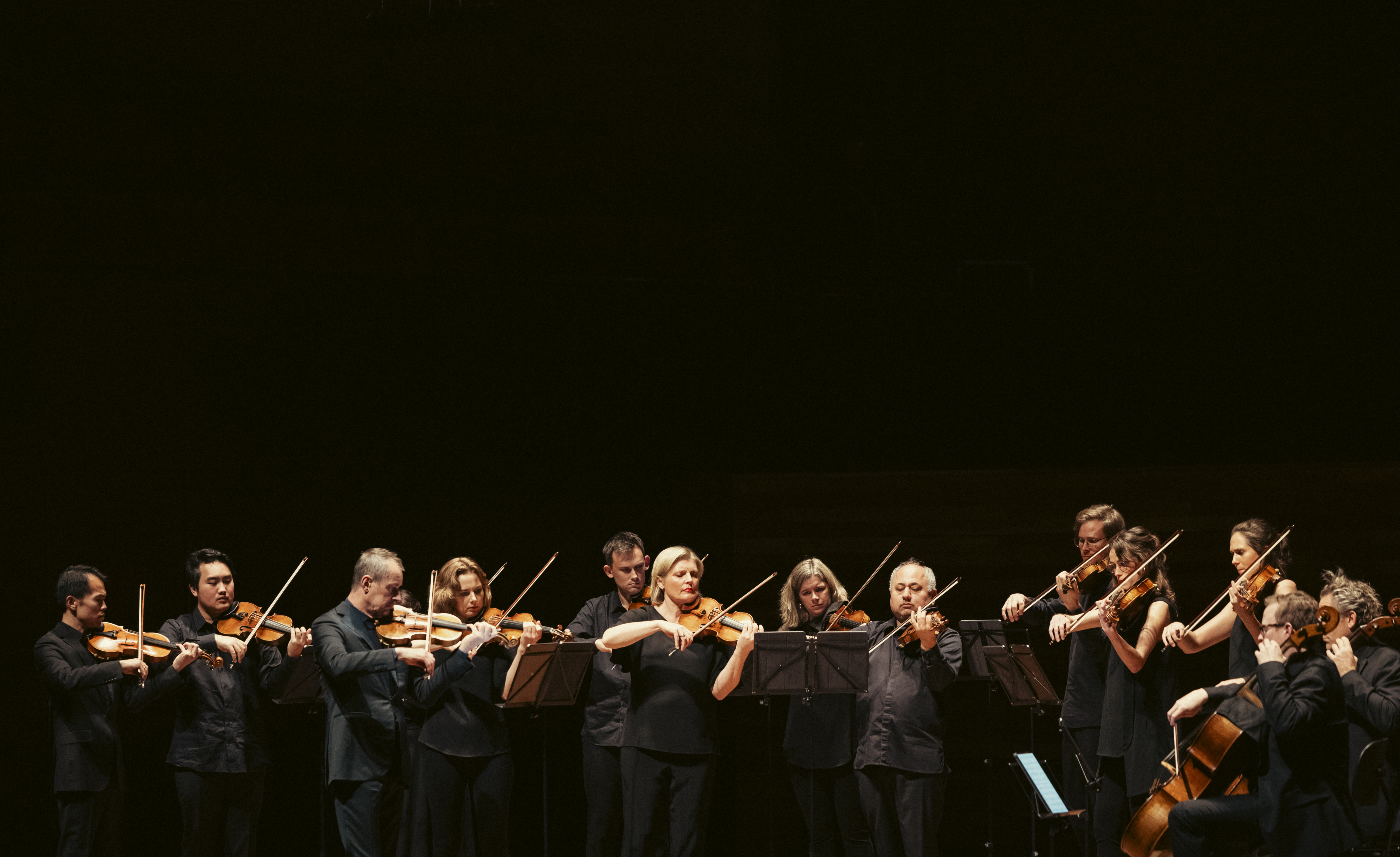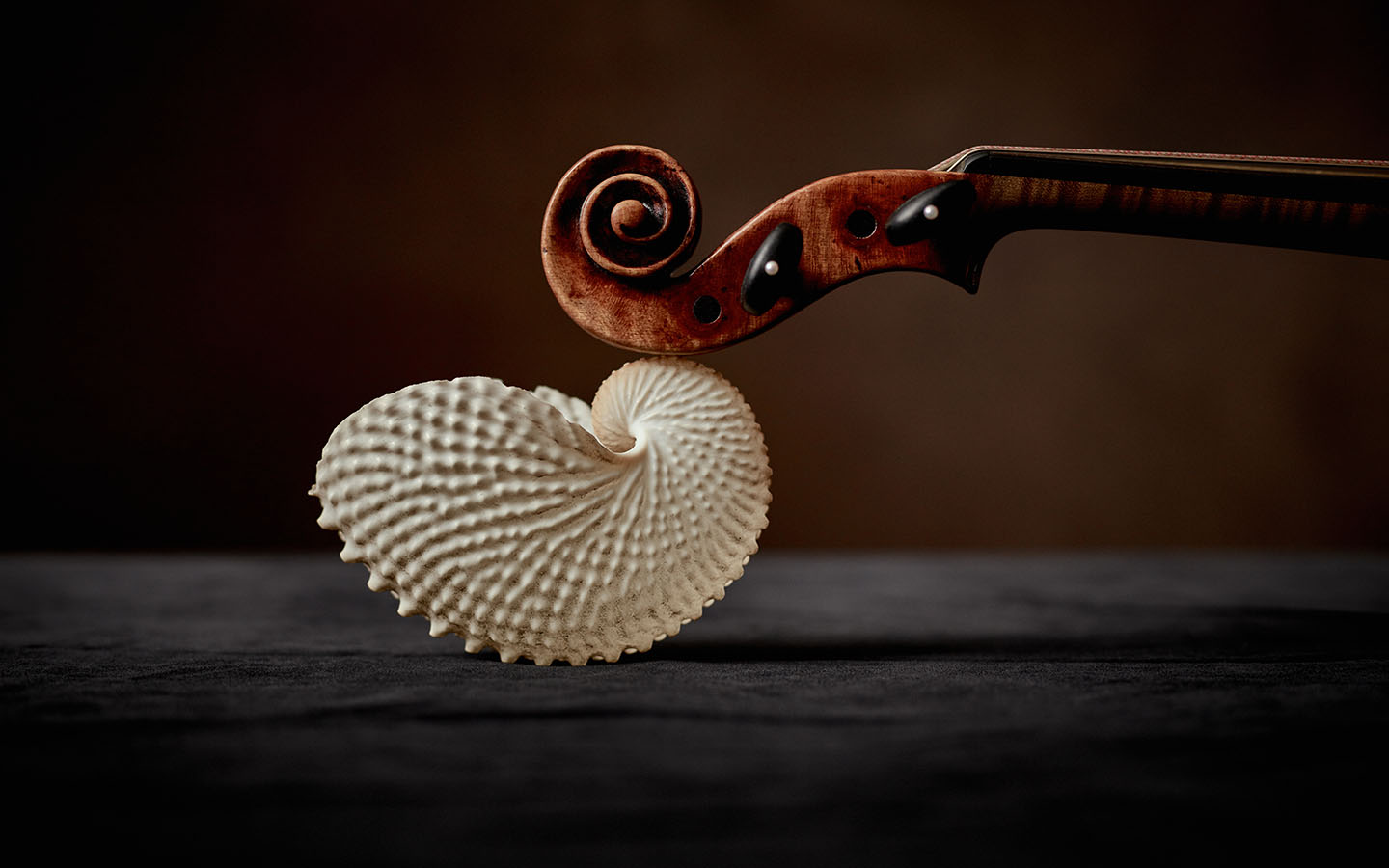
1743 Guarneri del Gesu Violin
Played by Richard TognettiRichard Tognetti’s 1743 Guarneri del Gesù violin, known affectionately as the ‘Carrodus’, is one of the finest instruments in the world – and one of the most mysterious. Del Gesù is rivalled only by Stradivari when it comes to violin craftsmanship, but with a cloak of dark glamour. Like Caravaggio and Gesualdo, he’s followed by rumours of murder and other salty crimes. The instrument is said to have been owned by virtuoso Niccolò Paganini, who lost it to gambling. The last known person to play it before Tognetti was Ossy Renardy, who was the first person to record the Paganini Caprices. Renardy tragically died in a car accident in 1953, but the violin was retrieved from the vehicle unscathed. Tognetti reels off its many virtues like someone recounting the qualities of a lover: “the dark rich hues, signalling the complexity of its sound; the rough-hewn supremacy of its scroll, one of the most exquisite things crafted by human hands.” The instrument is priceless – so is it terrifying to play? No, says Richard. “An instrument like this is useless in a museum: its intrinsic value comes only from being played and listened to: after all, that’s what it’s made for. Think about it like a child: they’re priceless, but we still hug them, throw them into the air, have fun with them, send them out into the world. It’s a living entity.”
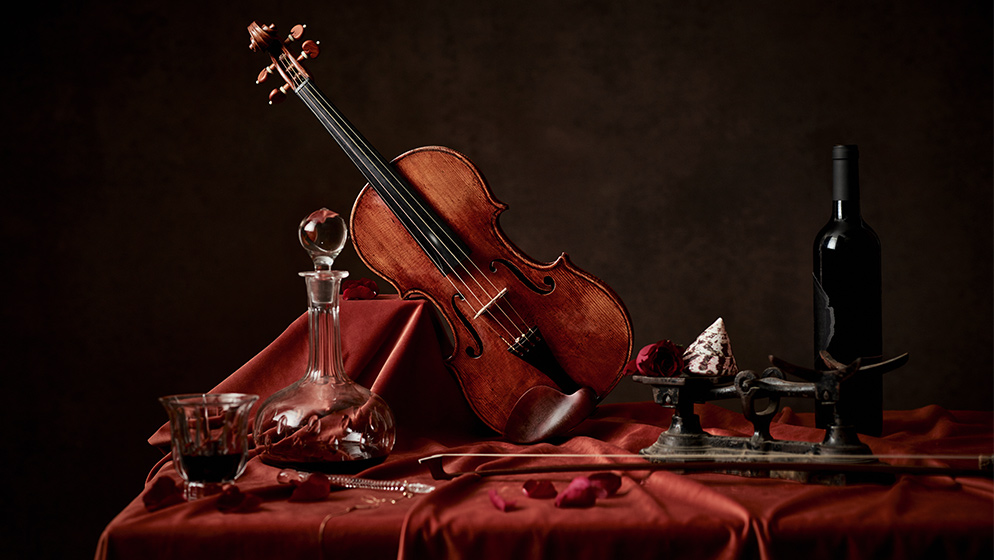
1726 'Belgiorno' Stradivarius Violin
Played by Satu VänskäThe ACO’s Principal Violin Satu Vänskä plays the 1726 'Belgiorno' by Antonio Stradivari, named by the ACO after the Orchestra’s Chairman Guido Belgiorno-Nettis and his wife Michelle Belgiorno-Nettis, who purchased the instrument for long term loan to the Orchestra. “It’s a late-period Stradivarius, which makes it an interesting Stradivarius,” says Satu. After a lifetime mastering his craft, the world’s most famous violin maker had entered a more experimental period. “It has a nice darkness to it with a boomy lower register, which is not necessarily typical of the violins made in the so-called golden period of Stradivarius. It’s a very powerful instrument, but the sound is velvety, with a real brilliance and zing.” Soon after the Belgiorno came into her life, Satu took it to a major violin auction house and handed it to one of their experts. “I said to him ‘Hey, I want to show you something.’ And he looked over it and said, ‘Oh yeah, it’s a late Strad, around 1726.’ He could tell just from looking at it. We’re just the mere mortals who play them, but instruments like this have a very different meaning to professionals who understand their value as objects." The Belgiorno – with its flamed maple back and distinctive rose varnish – has an unusually large body, but its defining characteristic is the space it demands. “I let a lot more air in than I would otherwise,” says Satu. “You don’t want to suffocate this violin. You buckle in and use the extremes of its accuracy and attack to your benefit.”
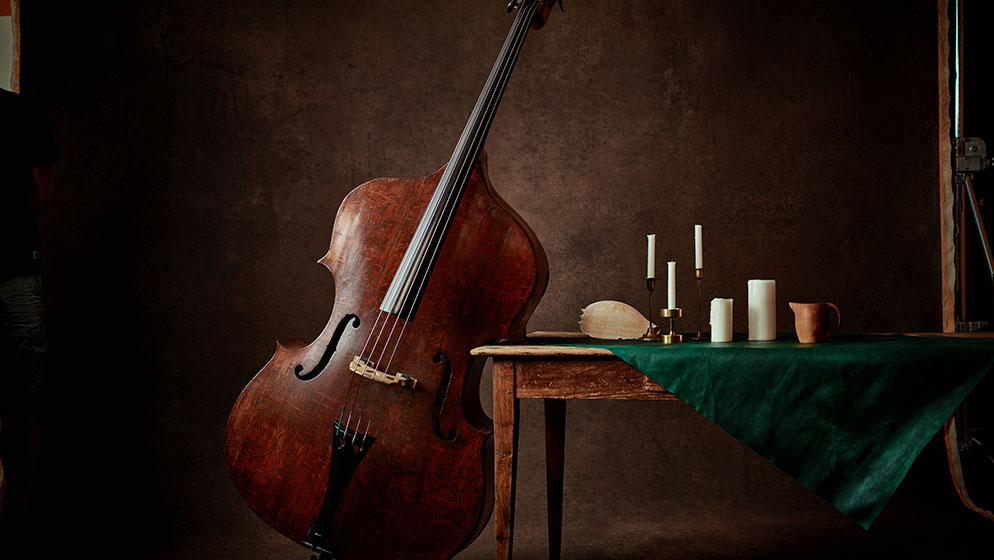
1585 Da Salò Bass
Played by Maxime BibeauACO Principal Bass Maxime Bibeau describes his 1585 Da Salò Bass as "the original subwoofer". "It has lots gusto," he says, "a specific visceral roar to its sound. Bass frequencies are long and take a certain distance to come together, but this one has a real grip on it, all the way through its range, and it really shakes the stage." He pauses. "As you can probably tell, I'm in love with it." Its earliest known provenance is the Augustinian abbey of Neustift in Northern Italy. The bass is considered large by contemporary standards, so the effort involved in creating it 435 years ago boggles the mind. "Cutting the tree, digging it out of the woods, shaping it by hand…" says Max. "They must have had a very particular goal and a specific wealthy patron in mind. They weren't making it for fun." It's believed the instrument resided in its original home for hundreds of years before the abbey was bombed in World War II. "It was found in the 70s by a double bassist, sitting in the corner of an office. All black, full of soot, but still looking very special to a keen eye." At some point, it had been repaired with the pages of an old Bible, including some Good Friday literature in Latin. The bass was acquired by an anonymous patron for the use of the ACO in 2012: what followed was a difficult period of adjustment. "It was rough going when it landed in Australia, in humid late December, after being in cold and dry Europe. It was all over the shop," says Maxime. "I got obsessive about coming to the ACO, evening after evening, tweaking little things here and there. Now it's a dream: very flexible, very malleable, very reactive. And that sound!"
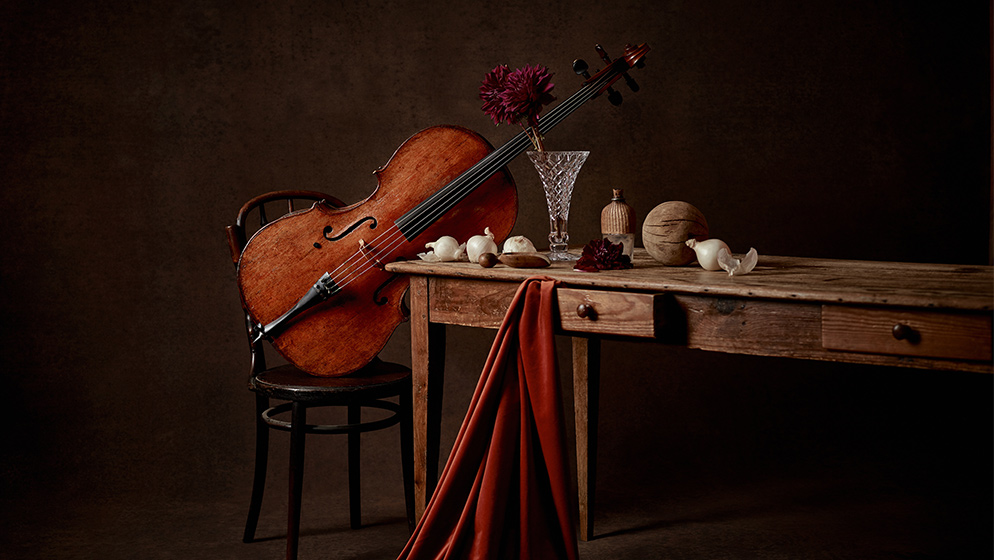
1729 Guarneri Cello
Played by Julian ThompsonThe 1729 Guarneri Cello played by Julian Thompson is affectionately called Barry, as in White, which makes perfect sense once you hear its seductive, mellifluous tones. “The cello is often likened to the human voice and Barry has all of these emotional tones,” says Julian. “He’s got a beautiful, rich baritone, but also a sweet singing tenor. You can make people cry with Barry's playing, or laugh - he goes straight to the emotional heart of things.” The cello is also known as the ‘Weiss’ Guarneri in honour of philanthropist and businessman Peter Weiss, who gifted it to the ACO in 2016 after making it available to the Orchestra on loan from 2007. Like many great instruments, its appearance is strongly indicative of its sound. “There’s a chocolatey darkness, a textured graininess,” says Julian. “You hear woodiness and earthy tones as well as those brilliant tops. With this instrument you need to roll up your sleeves and dig deep into the heart of the cello, it’s a really physical instrument to play, but the return on that work is incredible: you can shape the sound so much within a note or a phrase.” Giuseppe Guarneri filius Andreæ, the patriarch of the famous Guarneri family of luthiers, worked on the cello until he fell ill in 1729, when his son del Gesù took over. Del Gesù’s hand is particularly visible in the table of the cello. The table acts as the predominant acoustic amplifier of the instrument and is made of spruce. Barry has a one-piece back made of Poplar and the relative softness of this wood means that he needs a lot of warming up, almost like an old car. “It’s an absolute honour to play such a gorgeous instrument, with such a rich history and they have the characteristics we need to punch a beautiful, rich sound to the back of a big concert hall,” says Julian. “For me, the Weiss Guarneri’s sound is the elemental distillation of what a cello sound should be.”
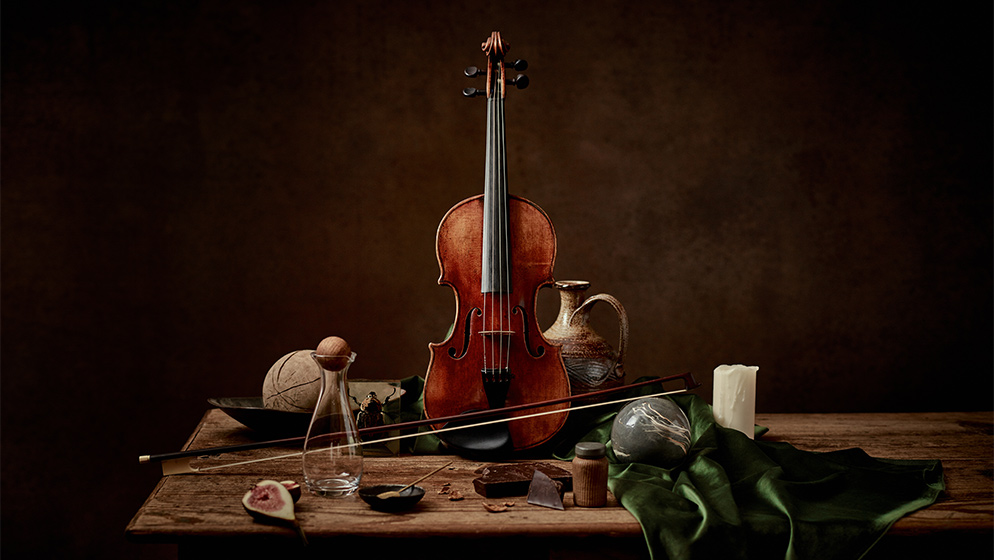
1759 Guadagnini Violin
Played by Helena Rathbone“I'm a big believer, having tried quite a few violins throughout my life, that they often look how they sound,” says ACO Principal Violin Helena Rathbone. The 1759 Guadagnini violin she has played since 2006 is a perfect example of this. “I call it the ‘Chocolate Monster’ because it’s almost edible, very dark with a golden fleck through the varnish. It’s just so warm and friendly looking, which is exactly how it feels to play.” She was first introduced to the instrument 25 years ago, when two Guadagninis were sent over from Hong Kong for the ACO to try. “The other one was blonder, more strident, harder edged,” she says. “But everyone immediately fell in love with the one we have now.” The 1759 was ultimately acquired by the Commonwealth Bank and lent to the ACO. Richard played it for many years, and Helena coveted it the whole time. Eventually, on Christmas Eve of 2006, it finally came into her hands, and a new universe opened up. “It wasn’t just the violin letting me do what I wanted to do, but showing me what I can do.” To this day, she feels lucky every time she opens the case. “When an instrument like this comes into your life, it’s like an artist who has had a palette of 25 colours suddenly having a palette of 1000. As a violinist you grow up listening to recordings and have the ideal sound of what a violin should be: the silvery quality at the top, the velvety quality of the bottom, the fat juicy G string. This has all this and more.”
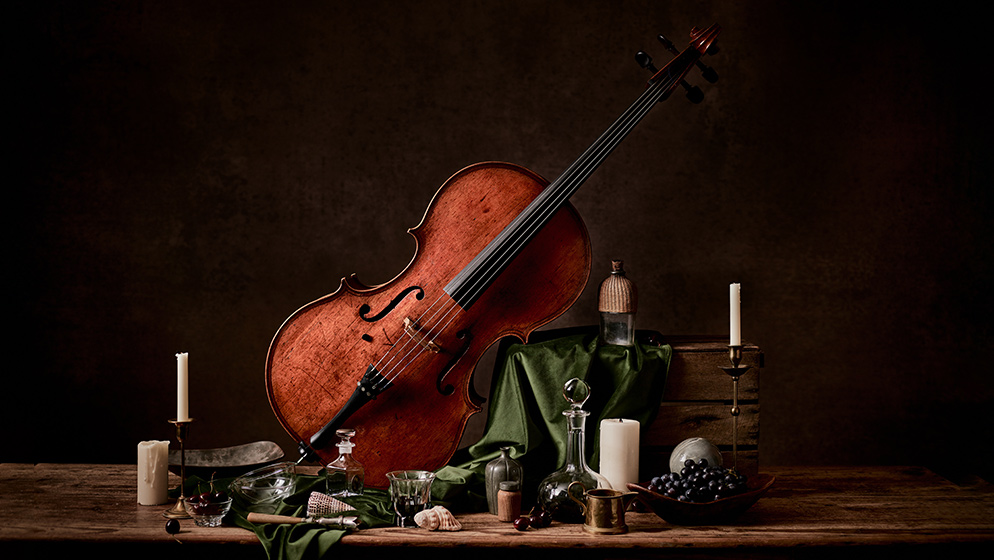
1616 Brothers Amati Cello
Played by Timo-Veikko 'Tipi' Valve“The sound of the 1616 Brothers Amati has been described as perfect,” says Principal Cello Timo-Veikko 'Tipi' Valve. “It’s golden and sweet but also has a dark and mysterious character.” The instrument, he says, “came into my life one rainy afternoon when the ACO was in London.” Richard Tognetti called to say he had just heard English cellist Steven Isserlis play this cello, and that Tipi should meet it as soon as possible. “At that stage we weren't really looking for another cello to add to our collection of fine instruments, so you could say that it found us. I knew immediately how special it was: the first notes I played revealed so much.” The Amati used to belong to the celebrated English cellist Amaryllis Fleming. She was a pioneer in historically informed performance practise and had this cello set up as a five-string baroque instrument. It was later converted back to its original form. Before the Amati, Tipi had played ‘Barry’ (the ACO’s 1729 Weiss Guarneri) for almost ten years. “I handpicked it myself and it had become my sound: we’d been in so many interesting situations together, and I’m so glad Barry is still in the Orchestra and part of our collective sound. I’ve been playing the Amati for over three years now, which in the lifespan of a relationship between a musician and their instrument is early days. We’re still getting to know each other. But I knew immediately it was an instrument of great power and great agility. The combination makes for a sound that’s completely transformative.”
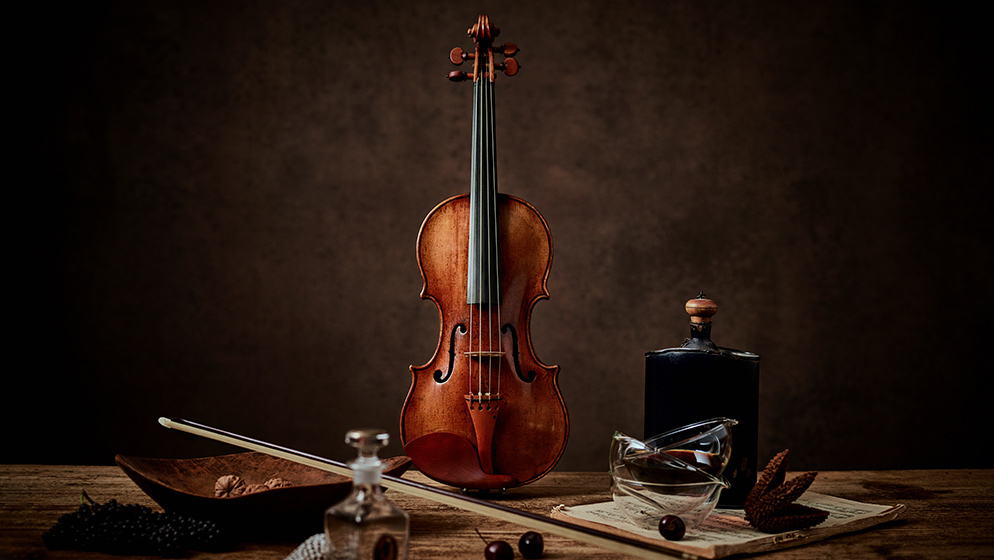
1590 Brothers Amati Violin
Played by Ike See“There’s something amazing about bearing witness to an instrument like this,” says Ike See of the 1590 Brothers Amati violin he has played for the last two years. “It’s 430 years old this year, and it’s in immaculate condition for an instrument of that age. The varnish has a beautiful golden sheen; it’s amazingly preserved. It has been passed through so many hands, through generations of musicians, and it’s quite staggering that now it’s my turn.” The violin went through a rigorous trial period before it was acquired by the ACO’s Instrument Fund, which included blind testing in all of the company’s regular concert halls. And it passed with flying colours. “It’s a very vibrant instrument with bell-like clarity,” he says. “It has a strong personality: it doesn’t hide in the bushes. Basically, it can do anything.” He credits the violin with allowing him to break open new colours, techniques and textures. “We’re merely humble custodians of these instruments,” he says. “They’ve already lived through hundreds of years, through countless wars, and they’ll outlive us all. That’s why we treat these gems with such respect.”
Photography by Daniel Boud and styling by Nat Turnbull.
